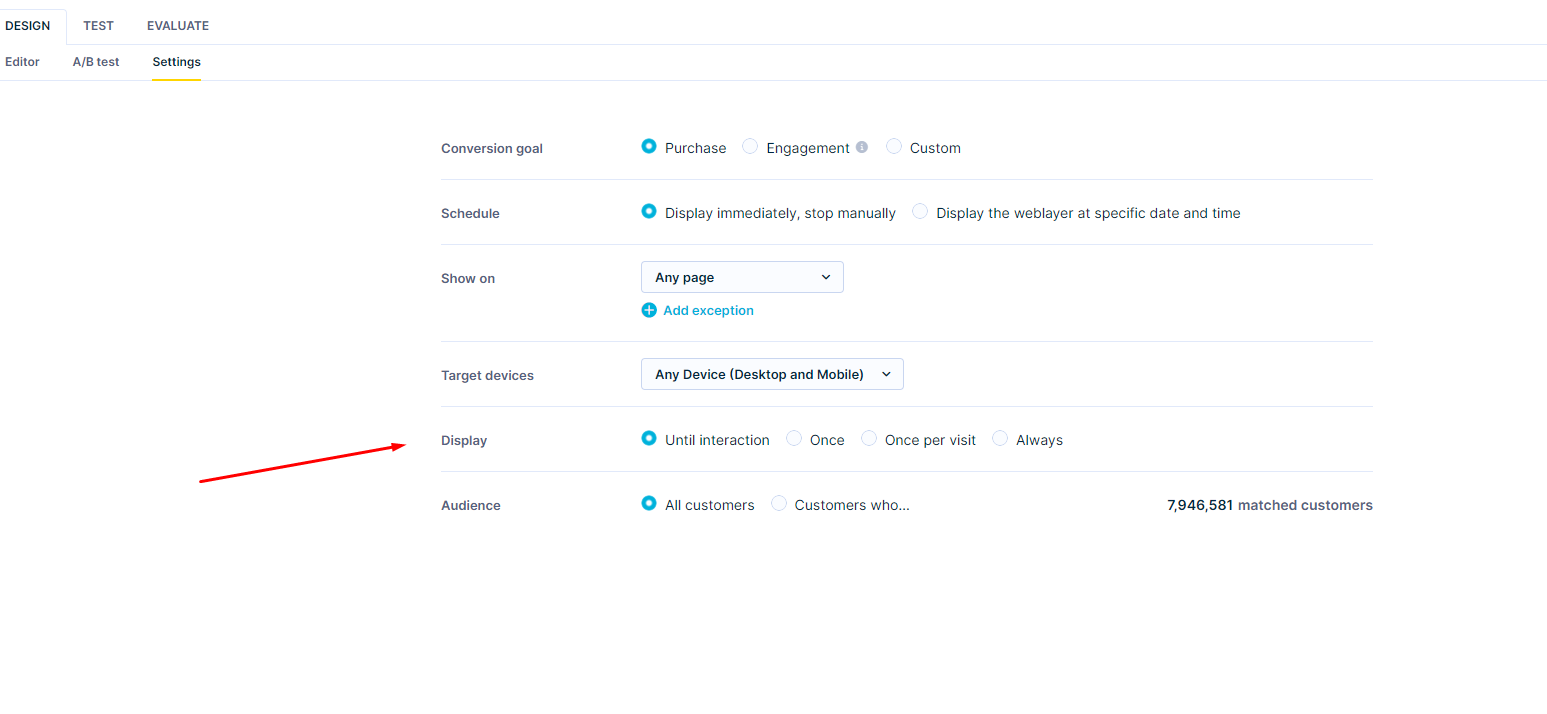Non-personalized weblayers
Most website visitors don't accept cookies. This means you can't reach 30-80% of your traffic with regular messages. Non-personalized weblayers solve this problem. They show messages to all visitors, even those who haven't accepted cookies.
Non-personalized weblayer availability in BETA
This feature is currently in BETA. We're working on improvements based on user feedback.
How non-personalized weblayers work
Non-personalized weblayers are messages that show to everyone who visits your website. They don't use customer data or tracking until visitors give permission.
Benefits
- Reach all your traffic, not just people who accepted cookies.
- Show important messages like sales or shipping updates.
- Respect privacy by not tracking until visitors agree.
- Get more people to see your message.
Process
The system shows these messages before tracking starts. Visitors see your message right away, even before they decide about cookies.
-
Someone visits your website.
-
The snippet loads the not-initialized SDK to the browser.
-
If you've enabled the experimental configuration, it fetches and displays only non-personalized weblayers.
-
Your message appears immediately.
-
The SDK stays in a not-initialized state until consent is granted.
-
If users accept cookies,
exponea.start()runs and normal tracking begins. The Display option works as for any other weblayer.
-
If users don't accept cookies, they still see your message but no tracking happens.
-
To respect customers' privacy, the banners don't use any personalization features of Bloomreach Engagement, such as customer filters or Jinja.
Setup requirements
Check your snippet version
You need snippet version 2.4.0 or higher for weblayers to display correctly.
Check your version:
- Console: Open Chrome or Firefox DevTools and type
exponea.snippetVersion. - Code: Search your integration snippet for
snippetVersion.
Turn on the feature
Add this configuration to your integration snippet:.
experimental: {
non_personalized_weblayers: true
}
Tracking
All non-personalized weblayers include JavaScript code that tracks basic events (like when someone closes a weblayer). You can add custom tracking logic too.
All tracking happens only after consent is granted (when exponea.start() runs). If customers don't consent, they'll see the non-personalized weblayers, but Bloomreach Engagement won't track any events for this user.
When to use non-personalized weblayers
Non-personalized weblayers work best for announcements that need to reach every visitor. Since you can't personalize them, they're perfect for universal messages that apply to everyone.
You can show generic weblayers to all your traffic on selected pages. This way, important information reaches everyone, not just users who accept cookies.
Non-personalized weblayers work well for:
- Time-sensitive offers that benefit all visitors.
- Critical information everyone needs to know.
- Compliance messages that must reach all users.
- Important service disruptions affecting all customers.
- Messages about delays or other issues that impact everyone.
Limitations
Display frequency
Options like "Display until interaction," "Once," or "Once per visit" need customer session data to work. These options start working after customers accept the cookie banner.
Before cookies are accepted
- All messages show as if "Always" is selected, no matter what option you chose.
- Frequency controls don't work.
- No session data can be stored.
After cookies are accepted
- Normal frequency rules work as expected.
- User tracking starts.
- Display options work like any other weblayer.
Some features aren't available
Since these are non-personalized weblayers, you can't use these features:
- Jinja: Can't use dynamic content or customer data.
- Customer filters: Can't target specific user groups.
- Conversion goals: Goal tracking isn't supported.
- A/B testing: Testing different versions isn't supported.
You can click on these options in the app, but when you save the weblayer, you'll get an error message.
Updated 6 months ago
